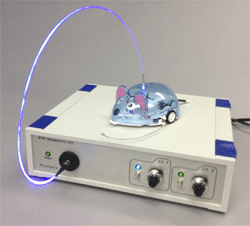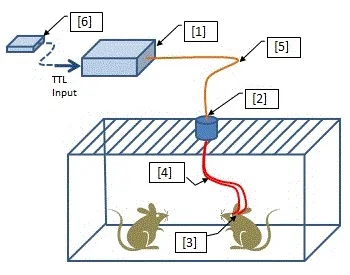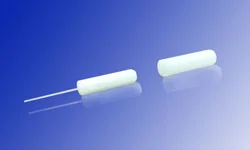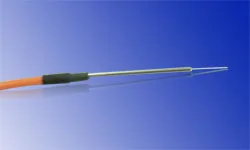The Prizmatix Optogenetics-LED-STSI system is designed for multiplexed optogenetics in-vivo experiments, combining two independently controlled LED wavelengths (e.g., blue/red or violet/green) into a single optical fiber output. This dual-wavelength configuration enables precise and reversible modulation of bistable inhibitory OptoGPCRs, allowing researchers to switch these opsins between active and inactive states using specific light colors.
Ideal for studies involving freely moving mammals, the Optogenetics-LED-STSI along with bistable inhibitory OptoGPCRs provides high temporal precision and stable long-term control without the need for continuous illumination. By targeting bistable inhibitory OptoGPCRs like PdCO, AkVAL, and Opto-mGluR6, scientists can selectively inhibit neural activity in specific brain regions, helping to map functional neural circuits and observe behavior in more natural conditions.

With optional bilateral control and support for various opsins, the Optogenetics-LED-STSI offers a cost-effective yet powerful solution for advanced optogenetics research requiring multiplexed and bistable inhibition within dynamic neural environments.
Key Features
- Exceptional Power at the Point of Delivery The system is engineered to deliver maximum power density at the cannula's fiber tip,maintaining high performance throughout all fiber optic connections and the rotary joint.
- Optional Bilateral Illumination: Powerful LEDs allow for simultaneous illumination of two sites, significantly reducing costs without sacrificing power at the implant.
- Precise Power Control: Adjust power manually with 10-turn potentiometers or electronically via 0-5V analog input ports.
- Independent Control per Channel: Each channel features dedicated TTL inputs for rapid switching and analog inputs for external power modulation.
- Opto-Isolated Inputs: Both TTL and analog inputs are opto-isolated, preventing ground-loops and ensuring signal integrity.
- Instantaneous Response: Enjoy immediate operation with a rapid rise/fall time of less than 10µs.
- Ultra-Low Torque Rotary Joint: Ideal for even the smallest animals, our LED-compatible rotary joint minimizes torque for unrestricted movement.
Optogenetics Toolbox for Freely Moving Mammals Experiments
Prizmatix offers a wide range of standard and customized items comprising the Optogenetics Toolbox. The most useful items for optogenetics experiments in free-moving animals are:
- Optogenetics-LED-STSI
- Extremely low friction Rotary-Joint
- Fiber Optics Cannulae
- Single or Dual Fiber for bilateral activation
- Fiber patch cord
- Optional Pulser module with Windows software
For more information on items 2-6 please see Optional Accessories below

Common LED wavelengths for OptoGPCRs:
Selecting the appropriate LED wavelengths is crucial for effectively controlling bistable OptoGPCRs, which typically require two distinct wavelengths: one to activate or shift the opsin to a specific state, and another to deactivate it or shift it to an alternative state. The Prizmatix Optogenetics-LED-STSI system is designed precisely for such dual-wavelength applications in freely moving mammals. Below are some of utilized OptoGPCRs and their corresponding activation/deactivation wavelengths as appear in literature:
- PdCO Opsin:
- Activation/State 1: can be activated by a range of wavelengths primarily in the UV to blue light spectrum. Violet LEDs (385-435nm) or Blue LEDs (e.g., ~460 nm to ~480 nm).
- Inactivation/State 2: Green to Amber LEDs (e.g., ~520 nm to ~590 nm).
- LcPPO Opsin:
- Activation/State 1: UV to Violet LEDs (e.g., ~380 nm to ~405 nm).
- nactivation/State 2: Green LEDs (e.g., ~520 nm to ~530 nm).
- DRPP1 & TrPPO1 Opsins:
- Specific publicly available data for DRPP1 and TrPPO1 activation/inactivation spectra can be limited. However, bistable opsins often utilize common wavelength pairings. Depending on their family (e.g., parapinopsin-like, OPN5-like, or other novel structures), suitable LED pairings could be:
- Pairing Option 1: UV/Violet LED (~380-405 nm) and Green/Yellow LED (~500-590 nm).
- Pairing Option 2: Blue LED (~450-480 nm) and Amber/Red LED (~590-630 nm).
- These OPN5-family opsins are typically UV/violet sensitive for one state and revert or switch with green light.
- Activation/State 1: UV to Violet LEDs (e.g., ~380 nm to ~405 nm).
- TInactivation/State 2: Green LEDs (e.g., ~500 nm to ~520 nm).
Remark: The exact optimal wavelengths can vary based on the specific experimental setup, expression system, and the precise molecular characteristics of the opsin variant. The Prizmatix Optogenetics-LED-STSI offers flexibility in combining different LED modules to cater to these requirements. Always refer to the latest research and supplier information for the most accurate spectral data for your chosen opsin.
The Prizmatix Optogenetics-LED-STSI's configurable dual-LED system (e.g., Violet/Green or Blue/Red) is perfectly designed to facilitate these two-wavelength control schemes, allowing for highly precise and reversible modulation of neural circuits in freely moving mammals. The Optogenetics-LED-STSI can be configured with specific wavelengths, upon request. Please see below for most popular configuration. Contact us if you have any specific requirement.
Expanding Beyond Two Wavelengths
If your research demands a third wavelength or more, our CombiLED multi-wavelength systems are the perfect solution. Visit our CombiLED webpage for more information.
Optical Specifications
| LED specifications | Units | Channel #1
|
Channel #2
|
| Peak wavelength range | |||
| Spectrum FWHM | nm | ||
| Optical ouput power values from optical fiber connected directly to Optogenetics-LED.
Useful for in-vitro or fixed preparate applications: |
|||
| Optical Power from 200µμm NA0.66 fiber (1m) | mW | ||
| Optical Power from 250μm NA0.66 fiber (1m) | mW | ||
| Optical Power from 500μm NA0.63 fiber (1m) | mW | ||
| Optical Power from 1000μm NA0.63 fiber (1m) | mW | ||
| Optical output power values from cannula of full Optogenetics system comprising Optogenetics-LED, fiber patch cord, Rotary-Joint, Dual/Single fiber and cannula inplant: | |||
| Optical Power from 200μm cannula | mW | ||
| Optical Power from 250μm cannula | mW | ||
| Optical Power from 500μm cannula | mW | ||
| Irradiance from 200μm cannula | mW/mm² | ||
Electrical Specifications
General Specifications
Optional AccessoriesFor more details on optional accessories please see: https://www.prizmatix.com/Optogenetics/Prizmatix-in-vivo-Optogenetics-Toolbox.htm
Optogenetics Implantable Cannulae
Optogenetics Single/Dual Fibers
Fiber Patch CordsPrizmatix offers a wide range of standard and customized multi-mode silica / polymer fibers as well as ferrules for optogenetics research. A Y-shaped fiber bundle is especially useful for activating two brain hemispheres simultaneously: a 1000µm or 1500µm fiber is coupled to the LED and connected to one side of the Rotary Joint. From the Joint's other side emerge two thin fibers which can then be connected to two separate ferrules: the light from the LED is divided equally between the two hemispheres without any loss of power. PulserOptogenetics Pulser is a programmable TTL pulse train generator for pulsing LEDs, lasers and shutters used in Optogenetics activation. The Pulser device comes with user friendly software that enables easy visual setup of numerous pulse train configurations. See Pulser product details 
| ||||||||||||||||||||||||||||||||||||||||||||||||||||||||||||||||||||||||||||




